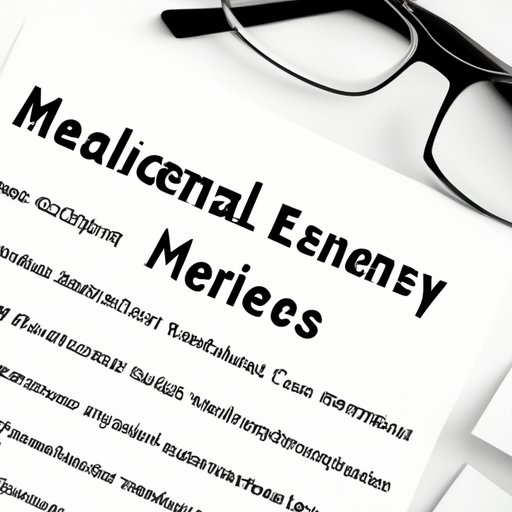
I. Introduction
As mental health awareness takes center stage, it’s important for employees to know their rights when it comes to taking leave due to related health issues. Federally Mandated Leave Act (FMLA) has made it easier for employees to take time off from work to tend to their mental health. But how can you access FMLA if you have a mental health condition? This article will provide the necessary information to help you navigate the process of getting FMLA for mental health.
II. What is FMLA and How Does it Protect Employees with Mental Health Conditions?
The Family Medical Leave Act (FMLA) is a Federal law that allows eligible employees to take job-protected leave for specific family and medical reasons, including mental health conditions. FMLA provides job protection for up to 12 weeks unpaid leave in a 12 month period and protects health benefits during the leave.
Mental health conditions, such as stress, anxiety, depression, bipolar disorder, and post-traumatic stress disorder (PTSD) qualify for FMLA protection. However, the mental health condition should be a serious health condition that requires treatment or hospitalization.
III. Eligibility Criteria for FMLA Protection
Employees who have worked for their current employer for at least 12 months, 1,250 hours in the last 12 months, and work in a company with 50 or more employees within 75 miles, are eligible for FMLA protection.
Employees need to provide the necessary documentation that includes doctor’s certification of the condition, detailing the expected duration of leave and the treatment required. Employees have to provide detailed information explaining why the leave is needed, the symptoms, and how it affects their work.
IV. Employer Responsibilities under the FMLA
Employers must inform their eligible employees that they are entitled to FMLA leave. Employers should also provide their employees with the necessary documents to request for FMLA leave. Employers must also continue to provide health benefits for the employee during their leave. Employers must return employees to their initial positions when they return to work after their leave expires.
V. FMLA Leave Documentation Process
Employees have to follow the prescribed steps to request for FMLA leave. This involves notifying their employer, completing the required paperwork, and providing the necessary medical certification. Employees are required to provide the employer with notice of their need for leave by providing at least 30 days’ notice or as practical. The employer may ask for additional information or clarification of the leave request.
VI. Addressing Potential FMLA Challenges
There are some scenarios that may make FMLA leave challenging. Some employees may not meet the eligibility criteria, and some employees may get denied even after meeting the criteria.
Employers may require second or third professional medical opinions, challenge the certification provided by the employee, ask for recertification during the period of leave, and provide alternate work location or schedule. Employees can seek help from their HR department, company representation or professional assistance for information and ideas on how to address challenges and seek resolution.
VII. Return-to-Work Scenarios
Once an employee has recovered, and they are ready to return to work, employers should allow employees to return to their position or a similar one without any discrimination. The employer must make reasonable accommodations for employees with disabilities based on their functional limitations. Employees should also notify their employer at least 2 days ahead before their intended return-to-work.
Returning to work after a mental health leave may be challenging. Employees may feel overwhelmed by work, or they may feel judged by their co-workers. Employers should work with employees to create a welcoming and supportive work environment, which may include a return-to-work meeting and scheduling check-ins during the first few weeks.
VIII. Additional Resources
Employees can also access additional resources to help manage their mental health. Employee Assistance Programs (EAP) offer counseling and support services to employees and their families. Mental health advocacy groups can also be helpful in providing assistance and guidance on how to get the necessary support.
IX. Conclusion
FMLA is a valuable tool for employees who need to manage their mental health. The eligibility criteria, application process, and employer responsibilities outline in the article provide essential guidance for anyone that needs to access the program. Remember that seeking assistance from HR, employee representatives, or mental health advocacy groups can help when facing challenges obtaining FMLA leave.
Taking care of your mental health is just as important as taking care of your physical health. FMLA provides job protection while you take time off to tend to your mental health. Mental health conditions should be taken seriously, and with the right support and resources, you can get back on track to living a healthy and productive life.





